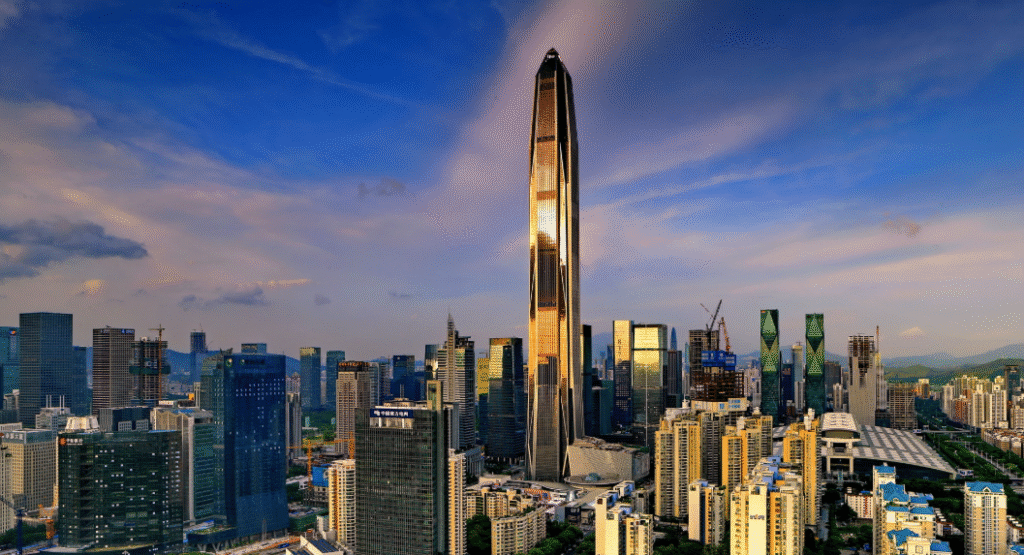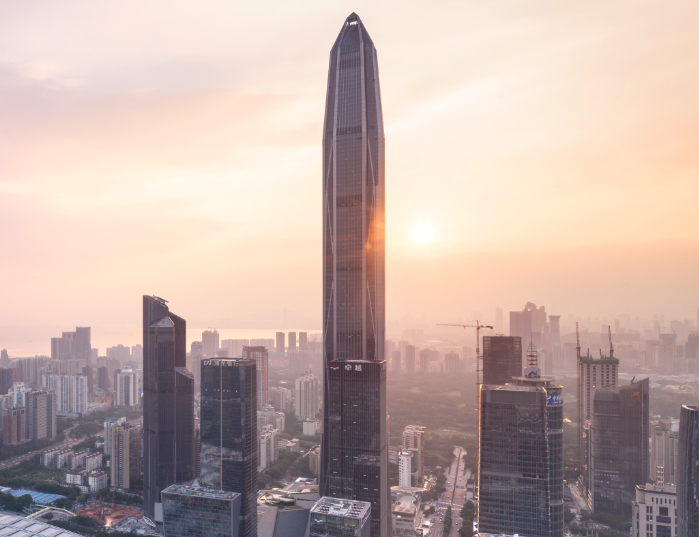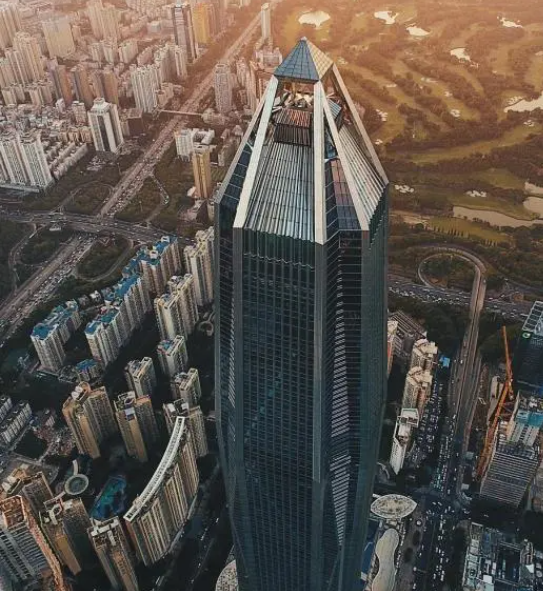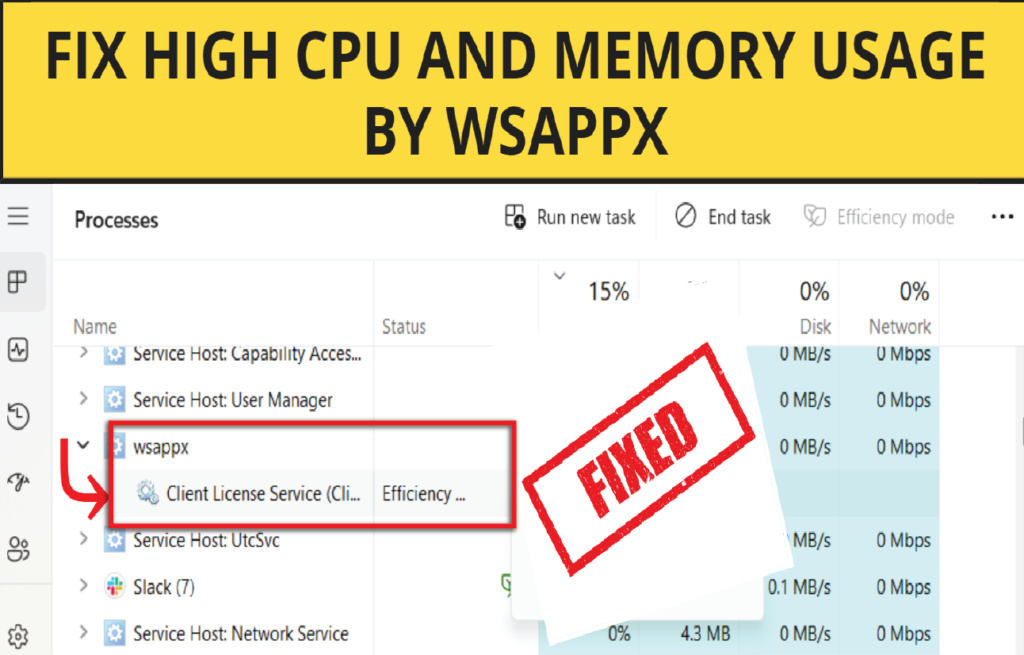Discover the ownership of the Ping An International Finance Center in Shenzhen. Learn about the tower’s history, development, company connections, and its role in one of the world’s leading financial groups.
The Ping An International Finance Center (Ping An IFC) is one of the tallest and most impressive skyscrapers in the world. Located in the center of Shenzhen, China, this architectural wonder has become a landmark for the city and for global finance and real estate. But who owns this towering structure? In this article, we look into the ownership of the Ping An IFC, its background, the company that built it, and what the building means for modern China.
The Owner: Ping An Insurance Group
The Ping An International Finance Center is owned by Ping An Insurance (Group) Company of China, Ltd., often called Ping An Group. This publicly traded company is based in Shenzhen and is one of China’s largest and most influential financial entities. It operates in various fields, including insurance, banking, asset management, healthcare, and smart technology.
Ping An built the IFC as its main headquarters, shaping its corporate image within a structure that reflects its ambition and influence. The building is not just an office space; it showcases Ping An’s growth into a diverse, international powerhouse.

Understanding the Role of Ping An Life Insurance
While Ping An Insurance Group is the main owner, a crucial player in the development was Ping An Life Insurance Company of China, a key subsidiary within the group. Ping An Life served as the official developer, managing project logistics, finance, and compliance. This part of the company led the real estate and investment management for the construction.
The Development Vision
Ping An acquired the prime land in Shenzhen’s central Futian district through a public auction in 2007. The goal of the project was to create a world-class skyscraper that would function as the group’s headquarters and enhance its place in the global financial market.
The building not only provides space for Ping An staff but also hosts commercial offices, high-end retail shops, a luxury hotel, and a public observation deck. The tower represents the blending of commerce, luxury, and symbolism.
Design and Construction
Ping An hired the well-known architecture firm Kohn Pedersen Fox Associates (KPF) to design the tower. Thornton Tomasetti managed the structural engineering in partnership with the local Chinese firm CCDI. China Construction First Building Group was the main contractor.
Construction began in 2010 and was completed in 2017. The final product is a 115-story, 599-meter-tall tower that serves as both a commercial hub and a symbol of Shenzhen’s emergence as a global city.
Why Ping An Chose to Build the IFC
Building the Ping An IFC was not just about creating office space; it was a strategic decision. The tower provided Ping An Group a unified presence in Shenzhen, minimizing scattered operations and showcasing its leadership in financial services.
Moreover, the location and grandeur of the building helped establish Ping An’s brand as modern, innovative, and global. The IFC’s prominence within the Shenzhen skyline acts as a constant advertisement for the group’s reach and reliability.
Not Just a Skyscraper, But a Statement
Skyscrapers often serve as branding tools for major companies, and the Ping An IFC is a prime example. It conveys financial strength, vision, and commitment to innovation. In a nation quickly advancing in infrastructure and technology, the building places Ping An among giants like Alibaba, Tencent, and Huawei.
The building’s height, ranking among the top five tallest in the world, reflects a desire to stand out both in China and the global market.
Economic Value and Asset Strategy
The Ping An IFC is more than just a headquarters; it is a significant real estate investment. Office spaces in the tower are leased to other high-profile firms, making it a source of income. The luxury hotel and retail areas further enhance its earning potential.
From an investment viewpoint, owning and managing such a building strengthens Ping An’s property portfolio and diversifies its financial resources. It’s not just about presence but also about long-term profit and urban influence.

Is the Building Publicly Accessible?
Yes, certain areas of the tower are open to the public. The building features an observation deck near the top, known as Free Sky, which offers stunning views of Shenzhen and beyond. There are also luxury retail shops, restaurants, and a hotel available to visitors.
However, the core floors, where Ping An Group’s operations are based, are reserved for corporate use. Office spaces in the tower are leased under strict commercial agreements.
Is It Common for Financial Giants to Own Skyscrapers?
Absolutely. Prominent financial firms around the world often establish themselves in notable skyscrapers. Think of JPMorgan Chase in New York, HSBC in Hong Kong, or Credit Suisse in Zurich. These buildings are more than mere corporate real estate; they symbolize prestige and longevity.
Ping An’s decision to invest in a vertical landmark aligns with this global trend. It builds trust with stakeholders and shows Ping An’s confidence in its ongoing success.
What the Tower Represents for Shenzhen
The IFC is more than just a corporate symbol; it reflects Shenzhen’s rapid growth as a global tech and financial center. Once a fishing village, the city has become a symbol of China’s modernization—and the Ping An IFC is part of that story.
It represents the government’s support for business growth, real estate innovation, and the blend of financial services into urban identity. Ping An IFC is a monument to modern capitalism within a socialist market economy.
Other Towers with the Ping An Name?
While other buildings may share the Ping An name, such as smaller finance centers in other cities, Ping An IFC in Shenzhen is the flagship and most iconic. Ownership of this specific building remains entirely with Ping An Insurance Group and its subsidiary, Ping An Life Insurance.
There is no joint ownership or third-party management involved. This simplicity strengthens the group’s brand control and allows for centralized management of the asset.

FAQs – Ping An International Finance Center
Q1: Who owns Ping An International Finance Center?
The building is owned by Ping An Insurance Group, with development and management overseen by its subsidiary, Ping An Life Insurance Company.
Q2: What is the building used for?
It serves as Ping An’s global headquarters and includes commercial office space, a hotel, shopping areas, and an observation deck.
Q3: When was it completed?
Construction finished in 2017, after seven years of development.
Q4: Does the building generate revenue?
Yes. Aside from housing Ping An’s operations, the tower earns money through office leases, hospitality services, and retail.
Q5: Is it open to the public?
Certain areas, like the observation deck and retail spaces, are open to visitors.
Conclusion – Ping An International Finance Center
The Ping An International Finance Center is more than just a skyscraper—it represents one of China’s largest financial institutions. Owned by Ping An Insurance Group and developed through its subsidiary Ping An Life Insurance, the building symbolizes power, stability, and a forward-looking vision.
From architectural creativity to corporate consolidation, every aspect of the Ping An IFC reflects deliberate strategy. It stands tall not only in physical structure but also in its significance to Shenzhen’s skyline and China’s financial landscape.


